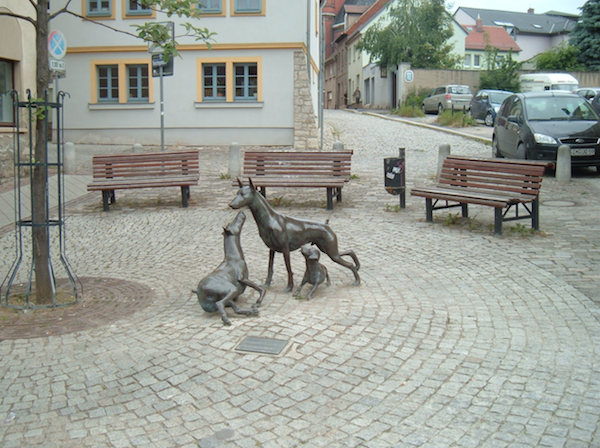
The first Dobermann Pinschers were bred around 1890 in the town of Apolda in central Thuringia, Germany by Louis Dobermann. After his passing, however, someone had to carry the breed into the future, and with Dobermann’s blessing, that person was Otto Goeller, and to some degree, Goswin Tischler, both Dobie breeders. They not only “tweaked” the breed, but also wrote the standard which was approved by the German Kennel Club. In fact, many believe that Otto Goeller was actually the chief architect of the breed by stabilizing and refining it, and it was his breedings that produced several of the most important dogs in the breed’s early history. We came across gossip hinting that Goeller had added a black Greyhound to the bloodline which, some say, accounted for the additional height, stamina, and speed of the Doberman, but there are no sources we deem trustworthy to verify this.
A few other things happened after Herr Doberman’s death in 1894: Germans named the breed Dobermann-Pinscher in honor of its creator, though half century later, the word, “pinscher” was dropped on the grounds that this German word for terrier was no longer appropriate (if it ever was).
Meanwhile, Tischler hadn’t been an idle bystander. He was owner of the Von Groenland Kennels in Apolda, and it was he who produced the breed’s first champion, Prinz Mitzi von Groenland, in 1895. His famous “five-star litter” was the combination of Lux and Tilly who produced five exceptional dogs – Belling, Greif, Krone, Lottchen, and Tilly II; Belling was the first dog to be registered in the National Doberman Pinscher Stud Book in Germany.
Five years after the Dobermann’s death, Goeller founded the National Dobermann Pinscher Club. In 1900, the German Kennel Club recognized the Dobermann Pinscher as a breed.
Image: Doberman Pinscher statues in Apolda, today
